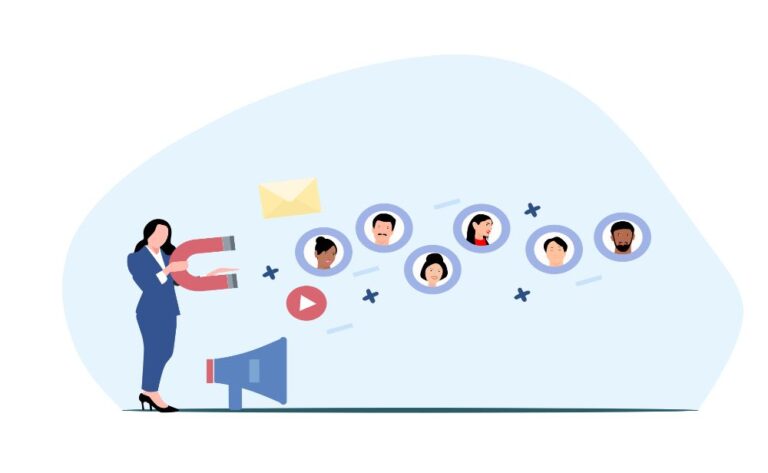25 Experts Reveal SEO Strategies You Need to Rank in 2023
A great number of up-and-coming marketers, content writers, and startups find SEO to be a mystery.
However, this does not apply to the people on this list.
I scoured the internet in search of the most knowledgeable individuals in the field of search engine optimization (SEO) in order to provide you with some of the most useful tips and strategies, some of which you may already know and others of which you may need to be reminded of (because yes – they do matter!).
Let’s get right into it.
1. Make use of Google Operators in order to generate ideas for content.
Google Operators are a potent tool that may be utilized to rapidly get data from search engine results pages (SERPs). You might use the following as a starting point to uncover ideas for content and holes that your website can fill.
2. Use Original Quotations in Your Articles
It amazes me how infrequently individuals include authentic quotations in their essays, because doing so seems to make perfect sense. Opinions from professionals offer a one-of-a-kind perspective, ensuring that each post provides your audience with fully unique and up-to-date knowledge. When this strategy is used to a complete content library, you put yourself in a position to quickly rise to the top of both the thought and Google rankings.
Getting high-caliber quotations has never been easier than it is with HARO. Simply publish what you need and from whom you need it, and your inbox will be swamped with quotes of a high quality.
3. Ensure That Your Content Is Always Being Updated
Experts in marketing and search engine optimization frequently spend their attention on the production of fresh content while maintaining the hope that previously published articles will continue to exist without incident. However, in many fields, publishing content on a blog and then ignoring it for several years is not a practical strategy. You need to make sure that the material you produce is still relevant even though the environment is always shifting.
Altering the year, removing outdated content, checking for broken links, and doing many other maintenance tasks may be included in these updates. If at all feasible, you should do a check every three months, and you should also pay attention to the trends in the business as well as your top-ranking pages so that you can assist them in performing even better.
4. Carry Out In-Depth On-Page SEO Audits
Many writers and editors have a terrible habit of completely ignoring on-page SEO. Without good on-page SEO, it will be extremely difficult to rank for the major keywords that you are targeting. Quite a few businesses create blog entries whenever they reach a predetermined score by making use of a relatively inexpensive plugin.
Utilizing an on-page SEO checklist is the most effective method for ensuring that your on-page SEO is being done correctly. Your team will be able to maintain the best SEO techniques and ensure uniformity across the website with the assistance of this tool.
On-page search engine optimization (SEO) considerations may include, amongst other things, improving headers and meta titles, satisfying search intent, and more.
5. Implement Content Clusters
If you want to be taken seriously in terms of SEO, you really have to concentrate on content clusters.
A content cluster is a group of content pieces (typically blog posts) that are related to a specific topic. Not only is it a great way to show Google that your website is an authority on a particular subject, but it is also a great way to show Google that your website is an authority on a specific topic. In exchange, you get an increase in your organic traffic and a higher position on the search engine results page (SERP).
The question now is, how does one go about creating a content cluster?
The first thing you need to do is choose a subject that you want to concentrate on. After you have accomplished that, the next step is to produce a number of pieces of content (blog posts, eBooks, and so on) that are all connected to the subject at hand.
Last but not least, you will need to make certain that every single piece of content has a link leading back to at least one other component that is part of the cluster.
This will ultimately result in higher search engine rankings as it will assist Google in better understanding how all of the different content components are related.
Despite the fact that one of my blog entries had some very high DR links pointing to it, the post’s rankings got stuck between positions 9-12 and never rose higher than that.
After I put this plan into action, the traffic to my primary blog article started increasing considerably, and it eventually ranked.
6. Include a Frequently Asked Questions Section in Your Articles
The Frequently Asked Questions area is an excellent location from which to benefit from rich snippets provided by Google.
You can include the schema that is required to be shown in the dropdown FAQ answers that appear in search results by using a straightforward plugin for WordPress. Look in the “People Also Ask” results for your target keyword or in the “Questions” tab located in the Keywords explorer section of Ahrefs to identify questions that are worth responding.
By optimizing for voice search, you can take the SEO value of your frequently asked questions (FAQs) to the next level. Make an effort to respond to each question in a way that is brief and simple to read, while at the same time ensuring that no significant material is omitted.
According to Backlinko, the typical search result has only 29 words and is written at a level appropriate for ninth graders. This strategy will allow you to capitalize on the growing trend of voice search as it continues to gain popularity.
7. The Velocity of Your Content Is Important
The rate at which you produce content is one of the most important aspects that determines how frequently your site appears in organic search results and how big of an increase in traffic you see as a result. Simply put, the faster you post material, the faster you may improve the organic traffic and the general performance of your website without sacrificing the quality. This is true even if you publish content at the same rate each time.
However, you must ensure that the content velocity is appropriate for your website and give your material sufficient time to develop before publishing it.
Make sure you have a content plan that extends at least a year into the future, and make sure you track your efforts, watch trends, and observe which articles perform the best.
You are free to make modifications, but it is still critical to have a framework and a detailed plan in place. This is necessary to ensure that the articles will have sufficient time to mature and positively affect the organic traffic that is directed to your website.
In the meantime, you can focus on improving the backlink profile, updating your site structure, reducing the amount of time it takes for pages to load, and improving overall optimization. Your rankings and traffic will start to change within a few weeks as a result of all of these factors combined, and the published content will continue to do its job in the background.
8. Don’t overlook the importance of internal connecting.
Unfortunately, despite the fact that internal linking is a vital component of every website, it is frequently overlooked. Building links, improving search engine optimization, and checking that the structure is correct should be the primary focuses of the marketing and SEO department. However, internal links are also required, not only to assist the reader in locating material that is more pertinent to their needs and to keep them on the website, but also to provide a more effective crawling process for search engines.
There are a lot of individuals who dislike doing it since it can take a lot of time, but if you use a WordPress plugin, you can speed up the process significantly. For instance, it assisted me in cutting the amount of time spent on internal connecting by more than fifty percent.
9. Do Not Ignore the Backlinks
Backlinks are the web’s de facto standard unit of currency. In today’s society, it is all too common for people to ignore the importance of constructing links from reputable websites. Because it is tough to build links and also because the conversion rates of efforts to build links are relatively low
Create assets that can be linked to in order to develop links. Creating pages with statistics would be the best illustration of this concept. It is essential to emphasize the fact that conducting original research and developing websites containing relevant statistics is one of the most effective strategies to construct links. More about this strategy will be discussed in the following part!
10. Be Aware of the Interests of Your Target Market
If you are interested in creating an editorial strategy that is specific to the audience of your website, it would be helpful to know the interests of that audience. This phase is very important in the process of building a high-quality editorial plan loaded with material that is relevant to the audience you are trying to reach.
It is crucial to have a strong brand identity, but it is also essential to develop editorial material that is up to date and frequently searched for in order to demonstrate your expertise and increase your visibility. Spending time on online discussion boards, having conversations with experts in your field, going to events and workshops, monitoring industry trends, and conducting keyword research are all great ways to accomplish this goal.
11. Ranking for Keywords with Low Domain Authority
The ranking for terms with a low domain authority should be your primary focus. These low-competition keywords are frequently so particular that they send a large amount of focused traffic to your website. This traffic helps you establish brand awareness and generates organic backlinks.
As time goes on and your domain authority grows, you will be able to begin targeting keywords with a higher level of competition.
12. Make Yourself the Final Result of Every Search
When someone searches for something on the internet using a query, they are ultimately looking for a certain piece of information. As search engine optimizers, it is necessary for us to comprehend the meaning that lies behind the search, also known as the search intent. Why would somebody be interested in looking for this specific word in the first place?
Google bases their method for determining the ranking of an item on how effectively that article answers the search phrase being used.
Let’s assume you created an article with 3,000 words on “how to tie your shoelace,” but you spent the first 1,500 words explaining what a shoelace is before ever getting to your point. This would be a waste of space. How straightforward is it to use?
People are likely going to leave your website in search of an answer that may be found on another website.
Your website’s overall health and reputation will suffer if it has a high bounce rate, therefore you need to find a strategy to satiate your visitors so that they do not return to the search results page. The ultimate result is that you have essentially put an end to their search, and you have maintained your position on page one of the results.
13. Keep an eye on the other businesses in your industry.
They are a great source of information and knowledge.
You are able to not only see what they are doing well, but you are also able to see what they are doing incorrectly. This knowledge may prove to be really helpful as you seek to strengthen your SEO approach and maintain your competitive edge.
You can gather intelligence on your rivals by making use of a wide variety of applications and approaches; however, the one that has shown to be the most effective for me is to manually review their sitemap and track their rankings on Ahrefs. You should think about the material that is performing the best on their site, the keywords that they rank for, the links that they are obtaining, and the structure of their website.
14. Dig Deeper Into Search Engine Results Page Analysis
Reading other blogs on the same subject and deciding on a structure for how to produce your own content piece are typically the first steps in developing a content plan. Content plans are typically driven by the keywords you want to rank for.
However, the finer nuances, which can either make or break that piece of material, are not given nearly enough care as they should be.
• Check to see whether the DA/DR of the sites that are ranking in the SERP is greater or lower than your own; is it comparable to your site?
• What is the average number of links that each page in the top 10 has? Are those links genuine, or do they simply point to scrapers or directory sites?
• What anchor text is being used both internally and externally to link to pages that rank highly?
Before you publish a piece of content, using this analysis can help you better organize the internal and external link efforts you will be making. It is also more accurate than simply considering the difficulty of the keywords you are targeting as a criterion to determine whether or not you should rank.
15. Do not ignore the need of content trimming and consolidation
If you have produced a lot of content in the past but received little to no traction from it, it is possible that it might be beneficial to prune or consolidate that information. However, this does not apply to all businesses.
Because here’s the thing: having content that doesn’t perform well will affect your search engine optimization and bring down your overall rankings. You should consider every piece of material that you publish to be equity in some sense. If only 10% of your content is performing well but the remaining 90% of your material is irrelevant and not performing well, then the successful 10% of your content will also be affected.
You may improve the overall quality of your material by pruning and consolidating it. This will allow you to get rid of the content that isn’t good, grow and update the content that is good, consolidate and repurpose any other content, and prune and consolidate any other content.
16. Move your content around in content bursts rather than droplets
When it comes to digital marketing, conventional thinking dictates that you should publish as much material as you can, as quickly as you can. On the other hand, in addition to this, you must also cultivate contacts, conduct regular audits of your website, and create links like there’s no tomorrow. When confronted with so many things to do in this day and age, the majority of people become disheartened and end up accomplishing far less than they might have otherwise. It is, to say the least, daunting.
Writing, editing, and polishing the content are by far the most time-consuming aspects of the process. And because you go one step at a time, the results are always quite weak at the beginning, and a lot of bloggers give up before they see any significant success.
What should we do in this situation? Publishing of content should be done in batches, and instead of droplets, progress should be made in bursts
Set up a few weeks or a few months during the year when your sole focus is to produce as much material as you possibly can. And in the time in between those intervals, you should focus on everything else, including promoting your website while paying particular attention to link building because that is how high Google rankings are achieved.
17. Use HARO to Construct Backlinks with a High Authority
Help a Reporter (also known as HARO) is a platform that gives you the opportunity to contribute authoritative quotes to many websites, such as The New York Times, Shopify, Wordstream, The Wall Street Journal, Cloudways, Reuters, Mashable, and many more.
If your response is chosen, it will be published on these websites, and a hyperlink to your site that carries a high authority and does follow will be included.
Signing up won’t cost you a thing. You will be asked to respond to HARO questions that are relevant to your areas of expertise on a daily basis. The links are well worth the effort required to obtain them; while we observe a Domain Authority (DR) of 67 on average for our customers’ websites, we often see DRs of 70, 80, and even more than 90 from some of the most well-known websites in the world.
18. Focus Your Content on Keywords with Low Competition That Your Rivals Rank For
Doing competitor research using a service such as Ahrefs is one of the most effective ways to come up with easy-to-compete-for keyword topics to write about.
When the website of a rival shows up, you have the option of clicking on the organic keywords for which they rank and then filtering the keywords based on their level of difficulty. You may receive lots of ideas for keywords that are simple to rank for, for instance, by filtering the keywords and selecting a keyword difficulty between 0 and 10. This will give you a range to choose from.
When you have finished with one rival and are ready to move on to another site, you should repeat the process described above. This technique can assist offer you hundreds of keywords with very low levels of competition, which you can use to get your website off the ground.
19. Utilize the Exit Intent Pop-Ups
There are a lot of companies whose primary focus is on driving traffic to their website, but very few of them actually capture and convert that traffic into leads for their company.
Utilizing exit intent pop-ups on your website is one of the most effective methods for accomplishing this goal. Exit intent pop-ups give you the ability to ask users to your website for their email addresses and then add those addresses to your email list, so extending the length of the customer’s journey with your company.
Utilizing exit intent pop-ups allows you to compile a sizable email list, which you can then use to convert potential clients into consumers who pay for your services. You may start installing exit intent pop-ups on your website by using one of the numerous free plug-ins that are available, and your email list can quickly grow depending on how much traffic your website receives from SEO.
20. Use the Journo Baiting to Your Advantage
Journalists are constantly on the lookout for new information, research, and studies that they may incorporate into their writing. Then why not begin the process of developing content pages that are focused on these topics in order to lure people to your site?
By conducting keyword research on terms such as data, statistics, reports, and case studies, you can unearth some hidden chances that journalists might be interested in.
And if you add calendar terms like as 2020, 2021, or 2022 to your article, you will be even more likely to draw the attention of journalists. This is because your content will then be even more topical.
Once they discover your page and credit your study, they will automatically link back to your site, which can help raise both your traffic and your visibility in the search engines.
Therefore, if you are looking for a method to grab the attention of journalists, one excellent tactic to try would be to create content pages that are rich in data.
21. Optimize the Page Speed on Your Computer and Your Mobile Device
Dealing with a website that loads slowly is a very annoying experience. Nobody like having to wait for a page to load, particularly when there are numerous other choices just a click away.
Your website’s search engine rating may suffer if its loading times are too slow. Google has acknowledged that the speed of a page is one of the elements that goes into their ranking algorithm; however, they are not the only company to do so.
Because search engines strive to provide users with the most relevant results, the loading speed of websites is of the utmost importance. According to a number of studies, even a little slowdown in page speed can have an effect on conversion rates.
To put it another way, enhancing page speed is critical for search engine optimization, ranking on Google, and the overall user experience. If you want your website to appear on page one of the search results, you need to ensure that it loads quickly across all of the many platforms that could be used.
22. Prioritize wisely
Establishing your priorities, goals, and key performance indicators (KPIs) is the first step in developing a successful SEO plan or campaign.
• Are you working to increase the number of visitors to your site?
Are you attempting to acquire new customers? Are you attempting to expand your presence on the internet?
Your company’s goals will help you identify which SEO projects are most important to tackle first. Building a large number of links is pointless if you haven’t established quality service pages, and re-designing your blog page is pointless if there are no blogs to link to.
First you need to define your objectives, and then you can work backward to determine the tactics that will get you there.
23. Have a Satisfying Experience for Your Customers
Because Google wants to make sure that its customers have the best possible experience when they visit a website, the company has decided to make the quality of the user experience one of the primary elements in determining search engine rankings.
A good user experience (UX) is the result of many different factors coming together, including the utilization of fonts that are simple to read, the provision of a design that is compatible with mobile devices, and the provision of quick loading times – all of which have been covered in the previous sections! You can read an article that goes into greater detail on the subject right now by clicking on the following link: Three strategies (and tools) to improve the user experience of your content.
You have to make sure that your user experience is up to standard if you want your content and site to rank well. It is also a good idea to make sure that those who have impairments may visit your website without any problems. As an illustration, the majority of the posts found on the Convince and Convert blog also come in an audio format.
24. Consider the content you’ll need for each stage of the sales funnel
The majority of businesses make the error of focusing their content creation efforts solely on those individuals who are at the beginning stages of realizing they have an issue or are in search of a solution to their problem.
However, if you want to rank well and receive more visitors, you need to take into consideration all stages of the sales funnel. That implies developing information geared toward individuals who are in the following categories:
• The Stage of Awareness: At this point, the individual is only beginning to become aware that they have a problem or requirement
• Comparing a variety of choices and approaches
• Having reached the point where they are ready to make a purchase
As soon as you have evaluated all of the steps of the sales funnel, you can begin to generate focused content that will help move your prospects through each stage until they are ready to buy from you. This will allow you to move more product.
If you don’t have the resources to nurture leads from Awareness to Decision, this is also a terrific approach to prioritize the material you provide to your audience.
Update the content to attract a greater audience.
It’s fantastic to publish fresh content frequently, but that doesn’t ensure an endless stream of visitors to your site. As new content is uploaded, the keyword rankings you are attempting to achieve will become increasingly difficult to achieve at each hourly or even minutely interval. You’ll notice that your articles are gradually falling farther and further down the rankings as a result of Google’s desire to provide users with the information that is the most pertinent to them.
However, there is an exit strategy.
As soon as you notice that your content is going too slowly or not quickly enough, make sure to adjust it. Add additional content, answer more questions, update data, and add more images – do whatever it takes to demonstrate to Google that the content you have been using is AND has been relevant for a considerable amount of time. Using that strategy, you will unquestionably be able to get on the top page of Google AND remain there, even if the domain authority of your website is not particularly high.
P.S. Also, keep in mind that you need to be practical when deciding which keywords you should and should not target. If there is already a lot of competition, it is hardly worth the effort.
The end of the story!
Because SEO is in a state of perpetual transition and development, it is absolutely necessary to keep abreast of the most recent trends and strategies. The following is a brief overview, compiled by professionals in their respective fields.
It is essential to keep in mind, however, that SEO is not a fixed practice. It is not always the case that a tactic that works for one person will also be successful for everyone else.
First and foremost, you should always keep your business objectives in mind and base your actions on those objectives. Form theories, conduct experiments, and put more effort into the strategies that have proven successful.
Happy SEO-ing!







